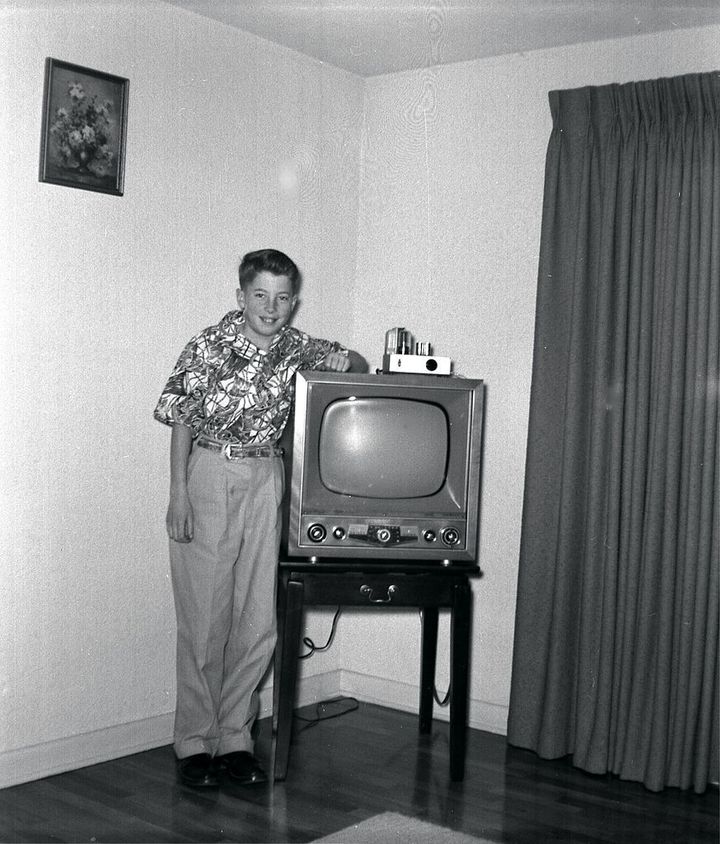In all the years that my family has been involved in politics, I’ve never seen such a revival of interest among Americans as I have in the past year. Though the common sentiment heard throughout my conversations with citizens is simply, “I hate politics;” there seems to be a refreshed and realistic understanding that politics affect our daily lives whether we like it or not.
It was easy to forget all about the necessity of everyday political savvy in the Reagan years when it seemed that all that was wrong in the world began settling down and behaving. That eased relaxation stayed with us through the 90’s and the Clinton and Bush administrations. By the time that the bottom fell out of the economy, entire generations had become apathetic and complacent with politics. Political shenanigans had become just one of many entertaining distractions reported to us in the media. The average American had learned to judge presidents no differently than our favorite cinema star and stopped talking about policy, foreign relations, and the economy. Attendance at local unit club meetings dwindled and politicians were simply local celebrities useful mostly for photo ops and fundraising collateral.
2016 changed everything.
Housewives who rarely voted suddenly became vicious social media queens, slapping bumper stickers on their cars and pounding signs in their yards. Droves of unemployed college graduates and thirty-somethings found reward in paid opportunities as community organizers, field directors, and political operatives and could be seen inciting violence at protest, filling lots at events, and most prevalently trolling any and every social media post that dared to hashtag the right keywords. Nameless thugs (term used loosely—as everyone from lawyers to teenagers participated) made time to spray-paint opposing parties signs and generally destroy or vandalize neighbor’s political property.
For those of us who have quietly worked on the political sidelines our entire lives, this awakening was exciting, baffling, and sometimes frightening. Most scary was the freak show that was the mainstream media. From NBC to Inside Edition to Fox News, everyone wanted in on the noise. Our favorite celebrities joined a cause, much to our distress. Instead of rising as a froth to the creamy head of a delightfully fermented indulgence, the whole of them arrived at the party a stinking, skunked, disgusting mess. The American people had taken control of the reigns and people from all walks of life had regained the power of thinking and engagement in politics.
Motivation: Distrust, Hope
Method: Personal Connection, Individual Research
Vehicle: Relationships, Social Media
Now, another election year is behind us. More people than ever have been shaken out of their blissful fog of apathy and it’s not something that you fall back into easily. The bad news is that there is an abundance of spin, disinformation, and hype in the media and, well, everywhere--posters, social media, billboards, people’s mouths, etc.. The good news: It’s never been easier to find the real facts in American politics all by yourself. Learn how to swim through the sea of information without getting covered in the heavy sludge of misinformation. Here are six ways you can do just that:
1. Learn how laws are passed and how you can influence it:
This is quoted from the House of Representatives website:
“Laws begin as ideas. First, a representative sponsors a bill. The bill is then assigned to a committee for study. If released by the committee, the bill is put on a calendar to be voted on, debated or amended. If the bill passes by simple majority (218 of 435), the bill moves to the Senate. In the Senate, the bill is assigned to another committee and, if released, debated and voted on. Again, a simple majority (51 of 100) passes the bill. Finally, a conference committee made of House and Senate members works out any differences between the House and Senate versions of the bill. The resulting bill returns to the House and Senate for final approval. The Government Printing Office prints the revised bill in a process called enrolling. The President has 10 days to sign or veto the enrolled bill.”
“After a measure has been passed in identical form by both the House and Senate, it is considered “enrolled”. It is sent to the President who may sign the measure into law, veto it and return it to Congress, let it become law without signature, or at the end of a session, pocket-veto it.”
These things are at our fingertips. Why would we not go directly to the source? Search for current legislation and records here: https://www.congress.gov/
2. Read and watch legislative activity without the interpretative spin of mainstream media:
On the United States House of Representatives Website, you can easily find out who represents your state; how to contact your representative; and what legislation they are working on in real time without the spin. http://www.house.gov/
You’ll probably want to follow proceedings in the Senate, too, at https://www.senate.gov/.

Speaker of the House Paul Ryan
3. Know the Legislative Influencers and find out what they are saying...from the horse’s mouth:
Congressmen serve two-year terms. The U.S. Speaker of the House (presiding officer) is Paul Ryan (Wisconsin, 10th term House). You can sign up for email updates, read his twitter feed, and find current and archived press releases and remarks at http://www.speaker.gov/. Ryan and House Majority leader Kevin McCarthy (California, 6th term House) are Republicans, as the House has been in GOP control since 2011. The Majority leader schedules legislation for floor consideration; plans daily, weekly, and annual legislative agendas; and works to advance the goals of the majority party and maintain alignment amongst Members. Keep up with him at https://www.majorityleader.gov/. You can also follow Majority Whip Steve Scalise (Louisiana, 5th term House) at https://www.majoritywhip.gov/. Whips are responsible for keeping party votes in line and making sure that those who are needed for a vote are in attendance. See, it’s all just a really male-dominant soap opera.
Nancy Pelosi (California, 15th term House) has been House Minority leader since 2011 (and was from 2003-2007 as well). The website for House Minority Leader Pelosi is http://www.democraticleader.gov/. The role of the Minority Leader mirrors that of the Majority Leader, but presents counterargument and sentiment to protect the values and rights of the minority party. The Minority Whip is Steny Hoyer (Maryland, 18th term) https://www.democraticwhip.gov/.
Is it just me, or does ‘term limits’ come to mind? Geez. A little too cozy in the House.
Senators serve six-year terms. You would think one term would suffice, but apparently not based on history. Bummer. You can find your state’s senators on this website along with daily updates on legislation: https://www.senate.gov/.
Of course, new to the process is very loved, very hated President Elect Donald Trump. His website is https://www.donaldjtrump.com/, but trust me you are definitely going to want to join twitter for the real fun. Make sure you get the verified site, @realDonaldTrump, since there are about a zillion fake ones with just as equally fake tweets. While you are at it, you might as well go ahead and follow Vice President Elect Mike Pence at @mike_pence. If ever there was an abundance of misleading quotes and tales on a man, it’s on Pence. Take some time to find out who makes up your U.S., state, and local representation and find out how to follow them online.

Terry McAuliffe
4. Don’t take your local and state politics for granted
There is a good chance that local leaders will become and/or influence state and national ones. It’s important to know the players. The political arena is surprisingly small. I remember meeting a new, young U.S. Congressman many years ago at a small hometown cookout. I listened carefully to his ideals and aspirations as he casually spoke. Over the years, I’ve watched him develop as a leader. Occasionally, I am reminded of the disappointment at how quickly DC politics is able to drown out core values of everyday men and women once they become part of the machine. What starts out as passionate drive morphs into party compliance. Get to know people. Try hard to know them in a human way and be compassionate with their efforts. At the same time, be a constant reminder of the promise they gave and the values that were at their roots.
Another perspective for local involvement is the reality of your everyday life. National politics will definitely impact your life--from education to taxation to national defense to healthcare. Local politics is no different if not much more personally intrusive or beneficial, depending. Your city, county, and state governments have just as much power in the very same areas and we are often ignorant to it. I’ve seen local school boards and trustees taken over by one political party and driven all the way to the far left and all the way to the far right. It’s never healthy to have imbalance, but it’s very common in local politics. Backyard politics, good ole boys clubs, and general apathy can very quickly lead to disastrous results. If you have any intention of investing in a community, know the players and pay attention.

Martin Luther King, Jr. Memorial
5. Know how to affect change
Get involved in your local unit or organizations that protect and promote your vested interests. Learn how to tactfully share facts on social media. Identify useful allies learn how to interact with them, inform them, and influence them. Think tanks, lobbyists, organizations, and individual pundits are more touchable than ever thanks to the transparency of social media. While there will always be smoke and mirrors, the fastest way to get to the bottom of a story is a direct line to the source. One big clue to knowing when and where to look is to identify spikes in media hype. If the media is collaboratively making a lot of noise with a story, start looking around. That’s a good sign that there is something else going on that they either don’t want you to see (at least not yet) or that they are suppressing something entirely.

Television
6. Stop watching the news
No, I’m serious. Oh my gosh. Why would you even want to? It’s chock full of repetitive propaganda that is reiterated in increasingly more boring ways throughout the day. For the love of all things cerebral, learn how to find primary sources and separate your need for absent minded entertainment from a reliance on televised news. I mean, isn’t Netflix meant to suffice for glazed-eye brainless relaxation? The news certainly shouldn’t be your go-to. Turn it off! Stay ahead of the curve by knowing what to look for and where. At the very least, if you must succumb to the ticker, take the headline and run with it doing your own research. Never, ever go by news source alone.
There is some use for televised media and that comes in the form of direct primary quotes. Really pay attention to which outlets provide actual interviews. Look for these markers:
- Questions asked are legitimately the ones the public cares about
- Time is given for the guest to respond fully to posed questions
- Question is not charged or presented in such a way that ‘forces’ a certain answer and are open-ended
- Guests are permitted some allotment of time to briefly explain what they are working on, either before or after the hosts questions
- Guests, regardless of affiliation, are treated fairly and respectfully
Primary source quotes are the heart of it. Today, if you google “Obamacare repeal” you will find over 27 million results. It will take you six pages of results before you even stumble upon a first person website discussing the topic. In this case, I would look for information from the President Elect, Speaker of the House, or House Majority Leader. Personally, I wouldn’t bother using a search engine; I would go directly to their primary source websites, facebook page, or twitter. I wouldn’t stop there. I would pick from a few of my favorite Senators and Congressmen and see what they had to say, as well. Why read spin when you can read facts directly from the source?
When I was a mere glint in my father’s eye, my uncle and hundreds of American politicians before him were walking streets door-to-door; driving into new cities with bullhorns; and stumping at political rallies. Print, radio, television, and social media have all had their turn at impacting and influencing American politics. Eight years ago, visionary community organizers understood the power of relationship and personal communication through social media and technology. Now, the tides have turned and the American people--for probably the first time in history--have the power to create and propagate the change they wish to see. The American people have voice to be heard. Now, they just have to learn how to brush off their rhetoric; shine up their debating skills; and stand up for their values.
